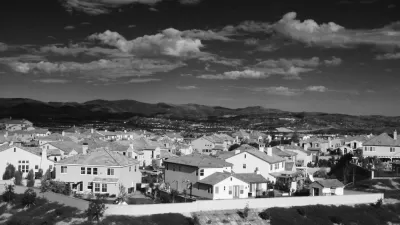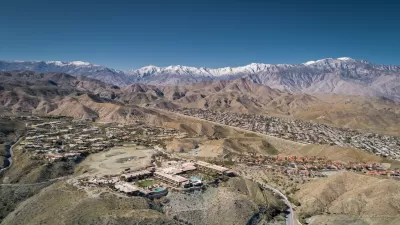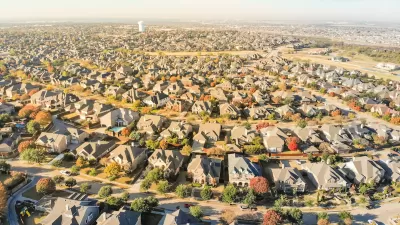A new report from the Brookings Metropolitan Policy Program shows that areas located 10-35 miles from America's central cities sustained far higher job losses during the recession, staunching the sprawl of people and employment.
"Before the recession, both jobs and people were moving to outer-ring areas," writes Isaac Riddle, who summarizes the key findings of a report released Thursday by the Brookings Metropolitan Policy Program. "The report shows that the share jobs [sic] within 10 to 35 miles of metropolitan downtown areas increased by nearly 10 percent between 2000 to 2007. But from 2007 to 2010, the outer-ring areas experienced the highest level of job loss."
"Not only did the recession stall the movement of jobs from downtown to the suburbs, but during that same time period the largest metro areas experienced notable population increases within their central business districts," adds Riddle. "According to 2010 Census data, the outer suburbs either saw less growth or no growth in population as compared to the inner suburbs and downtown areas."
"In the wake of the Great Recession, policymakers and regional leaders have the opportunity to make strategic decisions about how they will pursue metropolitan growth," argues Elizabeth Kneebone, the report's author. "If the next period of economic expansion reinforces low-density, diffuse growth in metropolitan America, it will be that much harder for metro areas to achieve sustainable and inclusive growth over the long term."
FULL STORY: The Recession Was Anti-Sprawl, Brookings Report Finds

Study: Maui’s Plan to Convert Vacation Rentals to Long-Term Housing Could Cause Nearly $1 Billion Economic Loss
The plan would reduce visitor accommodation by 25,% resulting in 1,900 jobs lost.

North Texas Transit Leaders Tout Benefits of TOD for Growing Region
At a summit focused on transit-oriented development, policymakers discussed how North Texas’ expanded light rail system can serve as a tool for economic growth.

Why Should We Subsidize Public Transportation?
Many public transit agencies face financial stress due to rising costs, declining fare revenue, and declining subsidies. Transit advocates must provide a strong business case for increasing public transit funding.

A Visual Celebration of Manhattan’s Chinatown Elder Community, Through Food
Lanterns, cafeteria trays, and community connection take center stage in this stunning photo essay.

How to Make US Trains Faster
Changes to boarding platforms and a switch to electric trains could improve U.S. passenger rail service without the added cost of high-speed rail.

Columbia’s Revitalized ‘Loop’ Is a Hub for Local Entrepreneurs
A focus on small businesses is helping a commercial corridor in Columbia, Missouri thrive.
Urban Design for Planners 1: Software Tools
This six-course series explores essential urban design concepts using open source software and equips planners with the tools they need to participate fully in the urban design process.
Planning for Universal Design
Learn the tools for implementing Universal Design in planning regulations.
City of Santa Clarita
Ascent Environmental
Institute for Housing and Urban Development Studies (IHS)
City of Grandview
Harvard GSD Executive Education
Toledo-Lucas County Plan Commissions
Salt Lake City
NYU Wagner Graduate School of Public Service





























